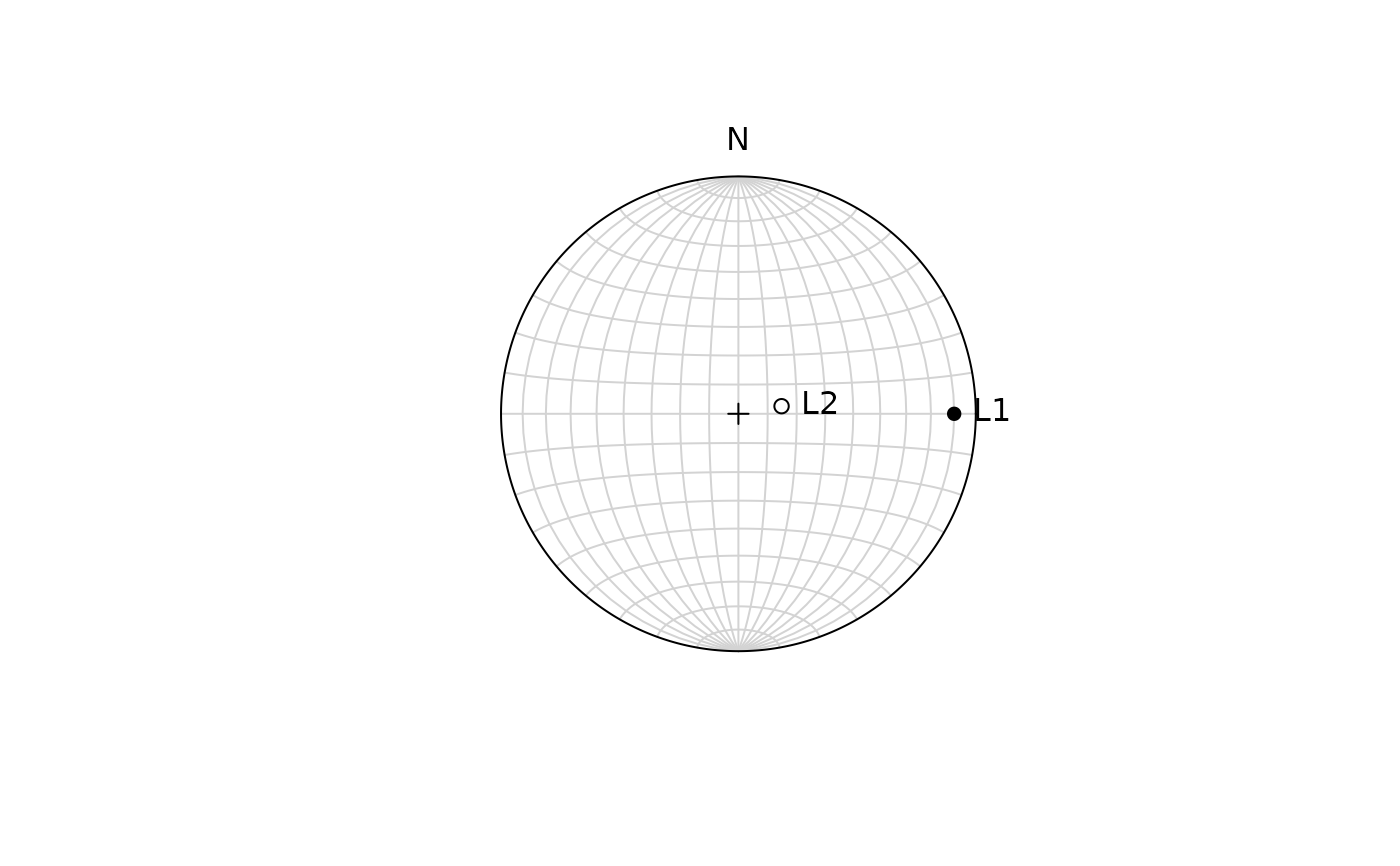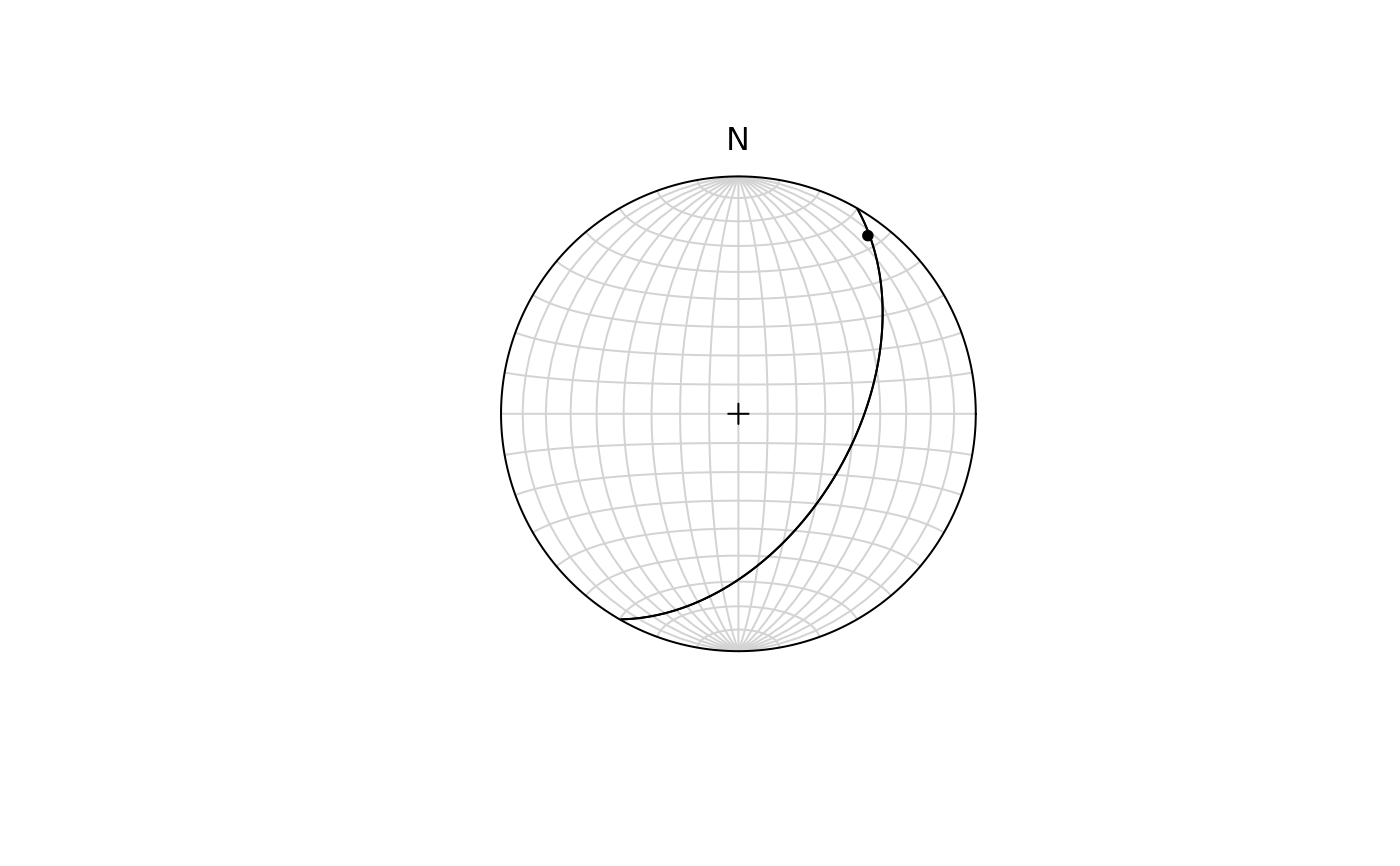Plot Spherical Objects
Usage
# S3 method for class 'Line'
plot(x, upper.hem = FALSE, earea = TRUE, grid.params = list(), ...)
# S3 method for class 'Vec3'
plot(x, upper.hem = FALSE, earea = TRUE, grid.params = list(), ...)
# S3 method for class 'Ray'
plot(x, upper.hem = FALSE, earea = TRUE, grid.params = list(), ...)
# S3 method for class 'Plane'
plot(x, upper.hem = FALSE, earea = TRUE, grid.params = list(), ...)
# S3 method for class 'Pair'
plot(x, upper.hem = FALSE, earea = TRUE, grid.params = list(), ...)
# S3 method for class 'Fault'
plot(x, upper.hem = FALSE, earea = TRUE, grid.params = list(), ...)Arguments
- x
object of class
"Vec3","Line","Ray","Plane","Pair", or"Fault", where the rows are the observations and the columns are the coordinates.- upper.hem
logical. Whether the projection is shown for upper hemisphere (
TRUE) or lower hemisphere (FALSE, the default).- earea
logical
TRUEfor Lambert equal-area projection (also "Schmidt net"; the default), orFALSEfor meridional stereographic projection (also "Wulff net" or "Stereonet").- grid.params
list.
- ...
parameters passed to
stereo_point(),stereo_smallcircle(),stereo_greatcircle(), orfault_plot()
Details
If x is a Ray, than solid symbols show rays pointing in the lower hemisphere,
and open symbols point into the upper hemisphere






